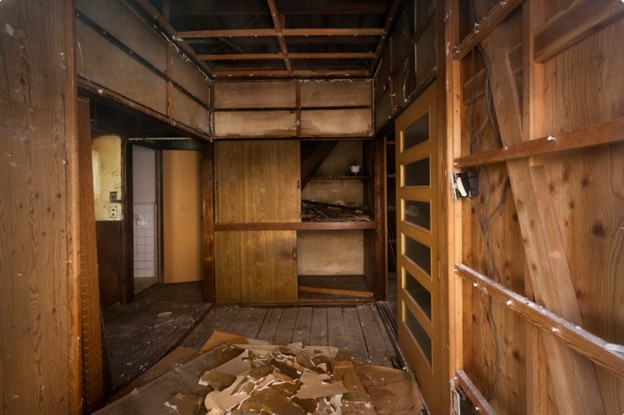Choosing the right flooring for your basement remodeling project can make or break the entire space. Basements present specific challenges that require careful consideration when selecting materials. From moisture concerns to temperature fluctuations, the flooring you choose must withstand conditions that differ significantly from upper levels of your home.
Basement Environmental Challenges
Basements naturally experience higher humidity levels than other areas of your home. Ground moisture can seep through concrete slabs and foundation walls, creating an environment where traditional flooring materials may fail. Temperature variations also affect how materials expand and contract, making some options unsuitable for below-grade installations.
Concrete subfloors are common in basements, and they can transfer cold temperatures directly to your feet. This thermal transfer makes comfort a priority when planning your basement remodeling project.
Luxury Vinyl Plank: The Modern Solution
Luxury vinyl plank (LVP) has become increasingly popular for basement remodeling projects due to its moisture resistance and realistic appearance. Modern LVP products feature advanced wear layers that protect against scratches and dents while maintaining their appearance for years.
Installation is straightforward with click-lock systems that float over existing concrete. This method allows for easy replacement of individual planks if damage occurs. The insulation properties of LVP help reduce the cold feeling underfoot that concrete creates.
Many LVP options include attached underlayment that provides additional cushioning and sound absorption. This feature is particularly beneficial in basements where footsteps might echo through the house above.
Ceramic & Porcelain Tile Options
Tile flooring offers excellent moisture resistance and durability for basement spaces. Porcelain tiles, in particular, have extremely low water absorption rates, making them ideal for areas prone to humidity. The variety of styles available allows you to create any look, from natural stone to hardwood appearances.
Installation Considerations for Tile
Proper installation requires a moisture barrier and appropriate adhesives designed for basement conditions. Heated floors can be installed beneath tile systems, addressing the cold temperature issue while adding luxury to your space.
Grout selection is important for long-term performance. Epoxy grout resists moisture better than traditional cement-based options and requires less maintenance over time. Sealing grout lines annually helps maintain the moisture barrier.
Engineered Hardwood: Wood Look with Added Stability
Engineered hardwood provides the appearance of solid wood while offering better stability in basement environments. The layered construction reduces expansion and contraction compared to solid wood products. However, moisture control remains essential for successful installation.
A proper vapor barrier and climate control system are necessary when installing engineered hardwood in basements. Some manufacturers specifically design their products for below-grade installation, so checking specifications is important before making selections.
Concrete Staining & Polishing
Working with existing concrete floors through staining and polishing creates an industrial-modern aesthetic while addressing moisture concerns. Acid stains penetrate concrete surfaces, creating permanent color that won’t chip or peel. Polishing creates a smooth, easy-to-clean surface that reflects light and brightens basement spaces.
Benefits of Polished Concrete
Maintenance requirements are minimal with polished concrete floors. Regular sweeping and occasional damp mopping keep surfaces looking their best. The thermal mass of concrete helps regulate temperature swings, though area rugs can add warmth and comfort.
Decorative options include scoring patterns, adding aggregates, or combining multiple stain colors for custom designs. These techniques allow for personalization while maintaining the practical benefits of concrete flooring.
Carpet Considerations for Basement Spaces
Traditional carpet installation in basements requires careful moisture management to prevent mold and mildew growth. Carpet tiles offer an alternative that allows for easy replacement if water damage occurs. These modular systems can be removed for cleaning or replacement without affecting the entire floor.
Moisture-resistant backing materials and antimicrobial treatments help address basement-specific concerns. However, carpet generally requires more maintenance and has a shorter lifespan in basement environments compared to hard surface options.
Subfloor Systems & Moisture Management
Regardless of your flooring choice, proper subfloor preparation is essential for basement remodeling success. Raised subfloor systems create an air gap between concrete and flooring materials, allowing moisture to evaporate rather than being trapped.
These systems often include insulation properties that reduce heat loss and improve comfort. Installation typically involves interlocking panels that create a stable, insulated surface for any flooring type.
Making Your Final Decision
Your lifestyle and intended use for the basement space should guide your flooring decision. High-traffic areas benefit from more durable options like tile or LVP, while family rooms might prioritize comfort with engineered hardwood or carpet tiles.
Budget considerations include both initial installation costs and long-term maintenance requirements. While some options have higher upfront costs, their durability and low maintenance needs can provide better value over time.
Climate control systems, including dehumidifiers and proper ventilation, extend the life of any flooring choice and improve overall comfort. These systems are particularly important for organic materials like wood products.
The success of your basement remodeling project depends heavily on choosing flooring that can handle the specific challenges of below-grade installation while meeting your aesthetic and functional requirements.

